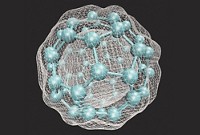Advertisement
Grab your lab coat. Let's get started
Welcome!
Welcome!
Create an account below to get 6 C&EN articles per month, receive newsletters and more - all free.
It seems this is your first time logging in online. Please enter the following information to continue.
As an ACS member you automatically get access to this site. All we need is few more details to create your reading experience.
Not you? Sign in with a different account.
Not you? Sign in with a different account.
ERROR 1
ERROR 1
ERROR 2
ERROR 2
ERROR 2
ERROR 2
ERROR 2
Password and Confirm password must match.
If you have an ACS member number, please enter it here so we can link this account to your membership. (optional)
ERROR 2
ACS values your privacy. By submitting your information, you are gaining access to C&EN and subscribing to our weekly newsletter. We use the information you provide to make your reading experience better, and we will never sell your data to third party members.
Protein Folding
AlphaFold upgrade will model a slew of new biomolecules
DeepMind’s structure predictor announces an update that can simulate more than just proteins weeks after a similar announcement from the David Baker Lab
by Laura Howes
November 1, 2023

The team behind DeepMind’s protein structure prediction software AlphaFold announced Oct. 31 that it is expanding its model beyond proteins. Ligands, nucleic acids, and post-translational modifications will all be included in the update, says the team in a blog post and accompanying white paper.
The announcement comes hot on the heels of the preprint describing a similar expansion to the RoseTTAFold model built by David Baker’s group at the University of Washington. Neither team has yet made their new software or code available to the broader scientific community.
Modeling biomolecules, and the chemicals that can interact with them, has been a huge topic of research interest in recent years. One key application is in drug discovery, with established pharma companies and start-ups investing in the area. For example, in 2021, DeepMind CEO and cofounder Demis Hassabis launched Isomorphic Labs, which will use the new AlphaFold model in its work to design new medicines.
But the rapid developments in computational protein structure modeling and design have alarmed some researchers. Just as these new computational approaches could speed up drug and vaccine design, so too could they be used for more harmful applications. On Oct. 25, the Institute for Protein Design hosted an AI safety summit where it was agreed to develop new voluntary guidelines for researchers using AI for protein research. The UK’s AI Safety Summit, hosted just outside London, started Nov. 1 and will discuss the threat of AI systems helping create new chemical or biological weapons.




Join the conversation
Contact the reporter
Submit a Letter to the Editor for publication
Engage with us on Twitter